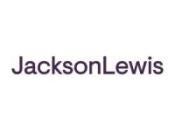A recent blog post by Susan Fowler, a former software engineer at Uber, and the author of two books regarding software engineering, has once again drawn national attention to the issue of the underrepresentation of women in the technology industry. Her story has received extensive media coverage, and Uber has retained former U.S. Attorney General Eric Holder to investigate Ms. Fowler’s allegations. Further, the allegations appear to have reinvigorated the #DeleteUber social media campaign.
Ms. Fowler’s account describes a plethora of employment law issues, in particular the risks employers face when employees lose confidence in management and HR as partners to combat workplace harassment and discrimination and take it upon themselves to antidiscrimination compliance issues.
To summarize the allegations, shortly after joining Uber, Ms. Fowler alleges she was sexually harassed by her manager and reported the incident to HR. She found HR’s response inadequate, alleging that rather than address her concerns, HR defended the alleged harasser’s conduct saying that it was the “man’s first offense” that it was “probably just an innocent mistake” and that because he was a “high performer” they “wouldn’t feel comfortable punishing him.” Ms. Fowler also alleges that she was given the option to switch teams, and that she risked being subject to retaliation if she chose not to switch. The alleged incident appears to have destroyed Ms. Fowler’s confidence in her employer’s commitment to protecting women from discrimination. She explains in her blog post that “[e]very time something ridiculous happened, every time a sexist email was sent, I’d sent a short report to HR just to keep a record going.” Ms. Fowler explains that the last straw leading to her resignation was a dispute over alleged iniquities in which employees received company branded merchandise.
As a best practices matter, employers are well-served from having employees who have been educated as to how to identify and report incidents of improper behavior. However, employees committed to carrying on unauthorized personal investigations can be problematic. By appropriately handling an employee’s first credible complaint, employers have an opportunity to build trust and allow the employee who raised the complaint to continue focusing on his or her job duties. On the other hand, if employees perceive that the investigations are not conducted appropriately, there is a risk they will take the task upon themselves. This distracts employees from their actual job functions and risks creating a more confrontational and acrimonious workplace atmosphere. Employees actively searching for evidence of workplace discrimination may interpret legitimate constructive criticism as retaliation and file further complaints to that effect. This increases the litigation risk associated with taking adverse employment actions against such employees. In short, employees who decide to conduct unauthorized investigations will likely be difficult to manage and expensive to terminate.
Employers can take steps to avoid this situation by both (1) maintaining appropriate workplace policies; and (2) adequately investigating credible complaints that these policies have been violated. These investigations must not only effectively discover the truth, they need to be viewed as fair and credible by employees.. Key components of a credible investigation are:
-
Assign an objective fact-finder to lead the investigation: best practice is to assign someone to investigate who will not come in with preconceptions about the persons involved. For example, retaining outside counsel or assigning a HR representative ordinarily assigned to a different business unit demonstrates that the investigation is being undertaken with an open mind.
-
Conduct formal witness interviews: make it clear to employees that they are being asked questions in connection to a formal investigation, rather than casual or informal information gathering.
-
Provide updates regarding the progress of the investigation through a single point person: there should be a single point person the complaining employee can contact who is knowledgeable about the status of the investigation. Avoid a situation where the complaining employee feels the need to investigate the status of the investigation.
-
Proceed with reasonable speed: by conducting an expeditious investigation, employers demonstrate that they care about employee concerns and can be trusted to handle the investigation. The complaining employee should not feel responsible for prompting HR to move forward.
-
Conclude the investigation with a close-out meeting: (1) apprise the complaining employee that the investigation has been concluded and whether disciplinary action has been taken; (2) advise as to what if any steps the employer is taking to prevent improper conduct in the future; and (3) regardless of the final outcome of the investigation, reiterate the employer’s commitment to its policies prohibiting retaliation. Employers should avoid equivocating or offering excuses for misconduct or otherwise suggesting that any disciplinary actions taken as a result of the investigation reflect factors other than the gravity of the misconduct such as an employee’s status as a high performer or the employee’s large book of business.



 />i
/>i

